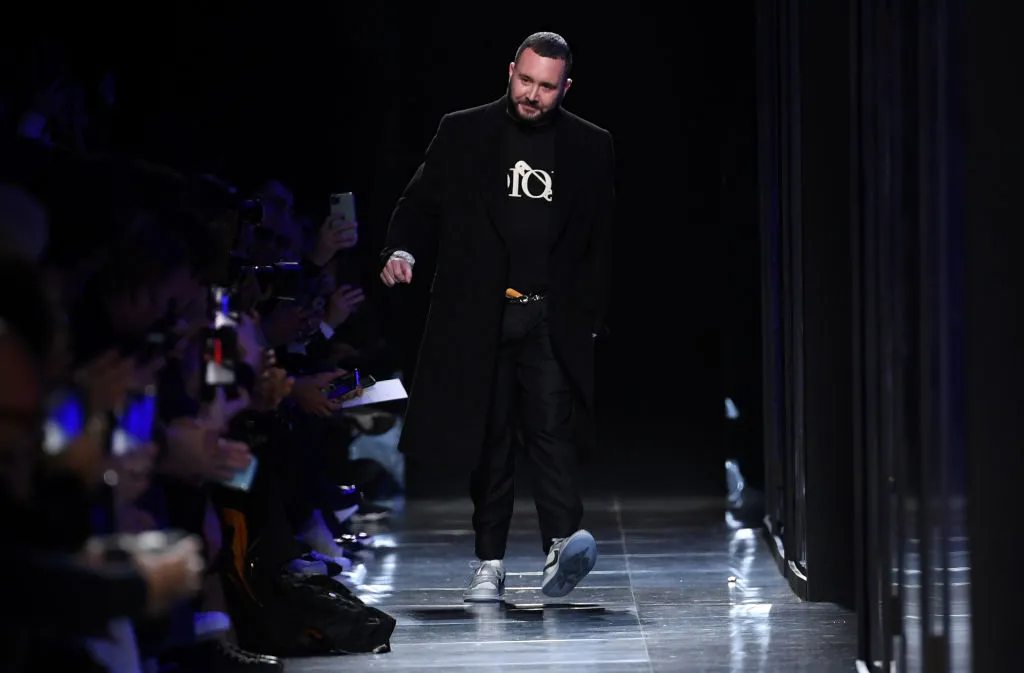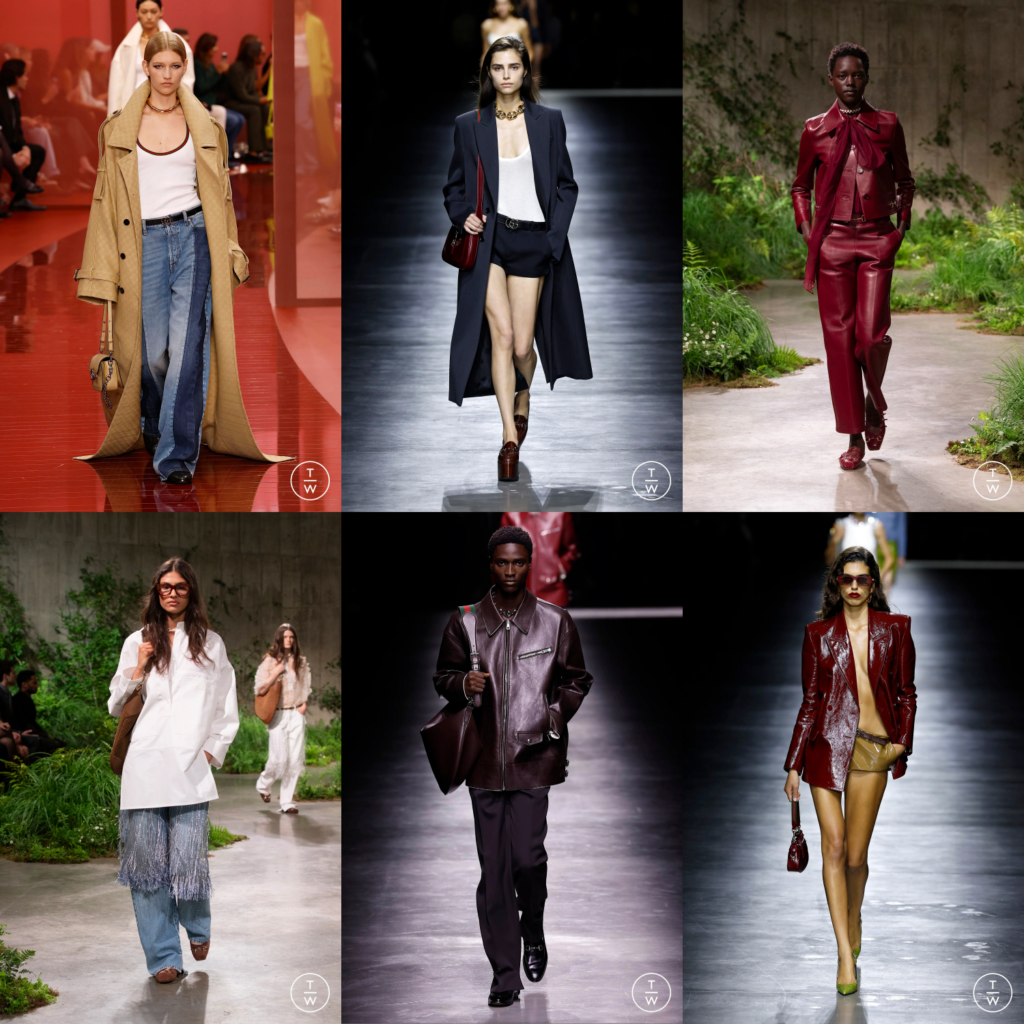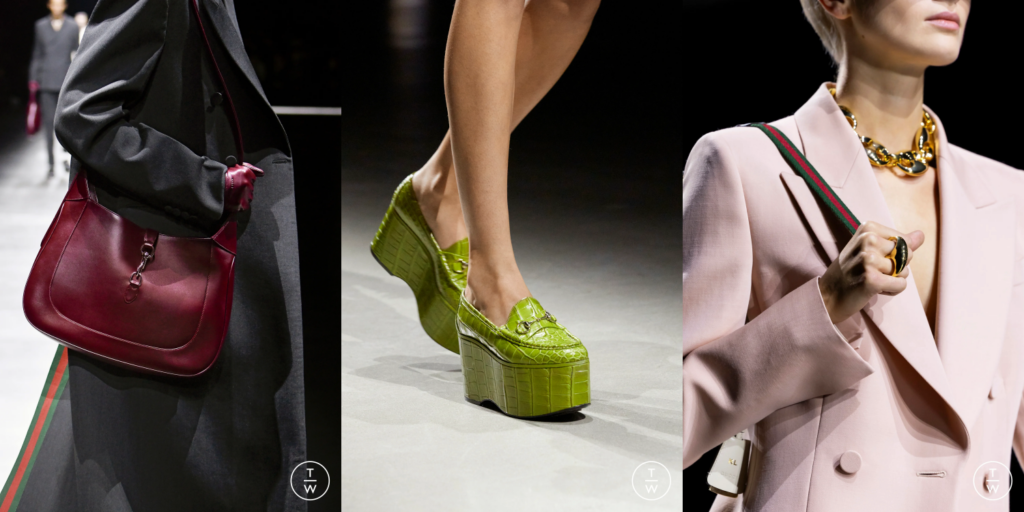Why Do Luxury Brands Keep Firing Their Designers?
With a downturn in the luxury market — driven by Communist China — designer brands are taking a bet on new voices revitalizing their brands.

Fashion is all about the latest trends. One moment, it’s wide-fit trousers and micro-handbags. The next, leather jackets and oversized shoulder bags; and who knows what follows that. Brands harp on about their codes and signatures, but consumer movement drives everything, and companies are focused on their quarter. One brand tries something, it kicks off, and the rest of the industry rushes to follow them, hoping to mirror their success.
Balenciaga made the Triple S, and shortly afterward, every other designer brand released their own chunky $1,000 sneaker. As sales of those died down, Miu Miu released their ultra-low profile collaborative New Balance 540s; now, you can buy thin-soled minimalist sneakers Jacquemus, Prada, Acne Studios, Lemaire, and more. I recently bought a dupe version from Cos.
But the dominant trend in luxury houses over the past year hasn’t been in fabric, cut, or color. It’s been getting rid of their lead designers. And when I say this is a popular trend, no bangle can compete.
Over the past year alone, Kim Jones left Fendi women’s, John Galliano retired from Maison Margiela, Sarah Burton exited Alexander McQueen, Peter Do left Helmut Lang, Hedi Slimane left Celine, Virginie Viard left Chanel, Jack McCollough and Lazaro Hernandez left Proenza Schouler, Louis Trotter left Carven, Matthieu Blazy left Bottega Veneta, Glenn Martens left Y/Project, which then died, Pierpaolo Piccioli left Valentino, Peter Hawkings was sacked from Tom Ford, and Dries van Noten left, um, Dries van Noten.

This is not normal; and houses didn’t leave the trend in 2024. On the last Friday of January, Kim Jones resigned from Dior, amid rumors of Lucie and Luke Meier leaving Jil Sanders, and Simone Bellotti leaving Bally; and then, barely a week later, on February 6th, Gucci announced that creative director Sabato De Sarno has left the brand, after only two years in his role. According to Gucci, their upcoming Milan Fashion Week collection will be presented by Gucci’s design studio, sans De Sarno, meaning he doesn’t even get a final runway bow on the way out.

The great shame is that De Sarno’s Gucci had immense potential and was already a significant improvement over the work of his (unduly beloved) predecessor, Alessandro Michele. Gone were the logos and bright prints; in were rich red leather, long wool coats, thick gold necklaces, and a long-absent emphasis on tailoring. Where Michelle was exuberant, De Sarno’s work was elegant, mature, immaculately made, but still sensual; a true return to the house that Tom Ford built.
Michele’s collections were bright, youthful, and obvious, filled with logomania and bright gimmick accessories, and the most tastelessly affluent paid to be dressed hat to heels in his bright Gucci monogram. While their money lasted, it was great. But Michele had associated the brand with a kind of tacky, hypebeast customer, and traded timeless sophistication for quick money; and quick money leaves. By 2020, sales had plateaued and would never return if they continued with his look.

It was De Sarno’s job to bring Gucci back to what it was: a fundamentally chic, sexy brand, the most Italian of the luxury houses. And he did. As I wandered Selfridges last week, a new red leather jacket from Gucci was the most beautiful item on sale — and it was paired with De Sarno’s resurrected “Jackie” bag, which was the best-looking handbag available too. These are beautiful, timeless items that will still look great in a decade; these weren’t isolated highlights. From the bags to the heels to the denim, the Gucci stand didn’t have a lousy item available.
(By contrast, Michele’s arrival at Valentino has been the death of its style, replacing timeless beauty with ugly, faux-bohemian trash, and everything at Valentino’s stand was hideous.)
De Sarno’s ready-to-wear range has been superb. But it didn’t sell. The tastelessly affluent didn’t want it, De Sarno didn’t have “stans” like Michele, and he never produced a hit accessory. Had Kering committed to De Sarno’s chic, timeless look, they may have been able to build a successful bags business that competes more with The Row and Hermes than Louis Vuitton. But that would take time, and Kering works by the quarter.
In response, De Sarno tried to force fun, playful items into his runway collections — like the platform clogs at his last women’s show or a monogrammed weekender with bold orange or green bands — but it didn’t work, and never would have. Loewe and Bottega Veneta pull off ‘sophisticated but fun,’ but the Gucci collections looked confused.
Kering would like to blame these slow sales on De Sarno, but they’d be wrong, and comparing his sales figures to those under his predecessor is stupid. Michele arrived in a growing market for luxury goods at a beloved brand that had fallen out of the limelight. On the other hand, De Sarno took over a brand with plateaued sales in a declining luxury market, whose predecessor had reframed the brand in a way that didn’t work anymore.
If you’re going to blame anyone, look to President Xi. Before COVID, aspirational and wealthy Chinese people — particularly those under 40 — were designer-brand shopaholics. They would fly to Paris, London, and Milan and leave with many more bags, shirts, and shoes than they arrived with. COVID didn’t kill this entirely — designer brands built big new stores in Shanghai and Beijing, which made up for some of the decreased international shopping — but then the Chinese property market wobbled, youth unemployment rose, and Chinese people stopped shopping and started saving. And so, Kering’s share price crashed almost 40% in 2024, Burberry fell by 30, Moncler fell by 8%, and even the ruthless market leader, LVMH, was down 13% by year’s end.
It’s a dire situation for the designer goods market, and there’s no good course but to wait it out, and hope that sales in India take off. But, again, brands work on the quarter, and if sales aren’t increasing, they’re dying. Sure, the current designers aren’t at fault; but if a brand replaces them with someone new, and introduces a new look, that might just bring customers back to stores. And as more brands let their designers go, the pressure to follow intensified; particularly as there’s never been more talent freely available than right now. And hence, you get the firing and hiring avalanche.
The reasoning is understandable, but it’s still pretty dumb. A trendy bag won’t solve the sales problem, and changing a brand’s look every two years is more confusing than exciting. By contrast, De Sarno was slowly rebuilding Gucci’s association with luxury and sensuality, and Kering could have followed his look, aiming Gucci at Hermes and The Row so that it became a true upper-crust player when the luxury market returned.
But tossing out your designers is on trend, and Gucci didn’t want to miss out. The market will remain stagnant, luxury sales will continue to slow, and brands will play musical chairs, switching out Creative Directors until the sales decline stops.

